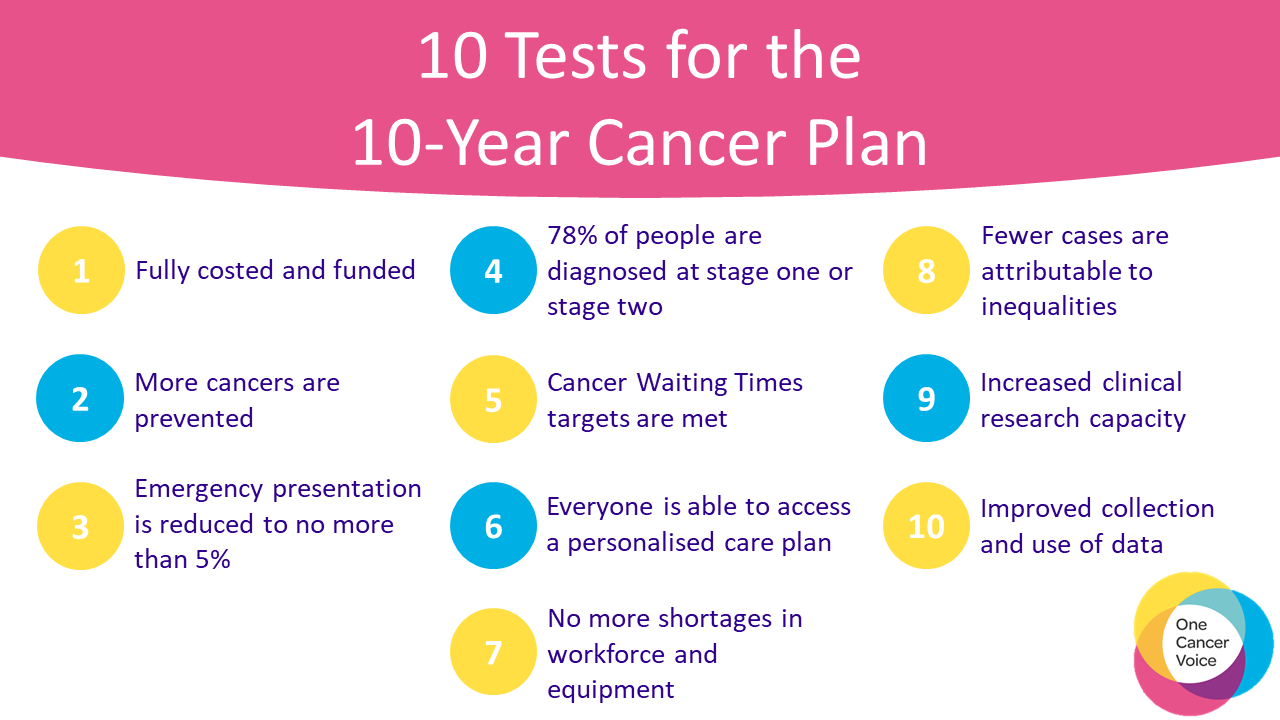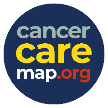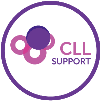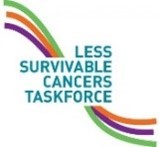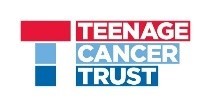Today, alongside 53 other cancer charities, we are speaking with One Cancer Voice and publishing 10 tests that the new 10-year Cancer Plan must meet if it is to be successful.
On 4th February Health Secretary Sajid David issued a call for evidence to inform his 10-Year Cancer Plan, which aims to make the UK’s cancer care system the ‘best in Europe’. In response, we joined 53 other cancer charities in producing 10 tests that the 10-Year Cancer Plan must meet to be successful.
- The 10-year Cancer Plan has clear political leadership, is fully costed and funded throughout its lifetime, with an annual report published on progress made against its ambitions.
- More cancers are prevented and England is ‘smoke free’ beyond 2028.
- The public is aware of the risk factors, signs and symptoms of cancer and act on them, leading to improvements in presentation. Emergency presentation is reduced to fewer than 5%.
- Progress towards early diagnosis is accelerated so that by 2032 78% of people are diagnosed at stage one or stage two and a 95% Faster Diagnosis Standard is met.
- Every person with cancer can access the treatment they need, at the right time, for the best outcomes. Cancer Waiting Time targets are met in every part of the country.
- By 2032, everyone with cancer is able to access a needs assessment and personalised care plan to support their health and wider wellbeing needs.
- Workforce and equipment shortages are addressed so that every person with cancer has access to the specialist workforce they need when they need it.
- Cases of cancer attributable to inequalities have meaningfully decreased.
- Clinical research capacity is increased, health service staff have access to dedicated research time and training and all populations are given the opportunity to participate in clinical trials.
- Data collection is timely, accessible, standardised and comprehensive and it is analysed and published swiftly to support the delivery and monitoring of all aspects of cancer across the pathway and cancer research
– Cancer Plan 2022, One Cancer Voice Cancer Charities’ Consensus Statement
Click here to read the full 10-Year Cancer Plan Consensus Status
We hope that this consensus statement will be well received and hope to see these findings reflected in the 10-year Cancer Plan.

